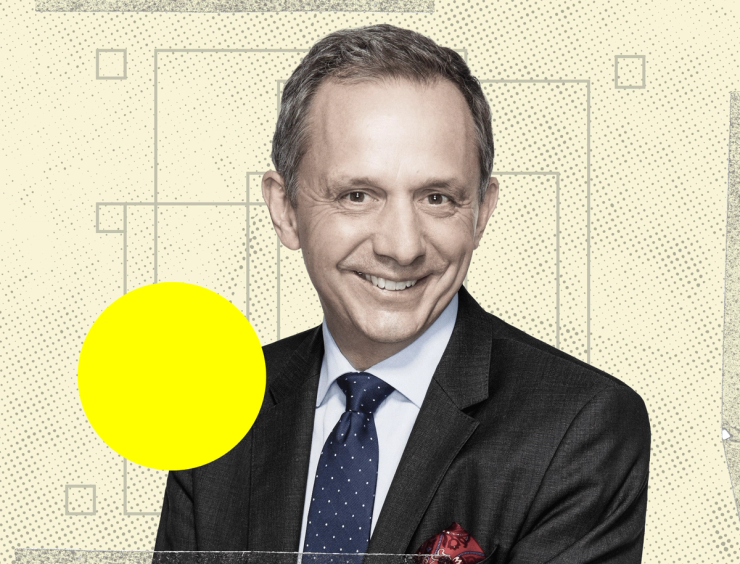The Signal Interview
Enrique Lores is the rare tech CEO who looks most comfortable in a suit. HP is considered the original Silicon Valley startup, and Lores has worked for it since 1989, when he took an engineering internship at one of its offices in Spain — just a month too late to meet co-founders Bill Hewlett and David Packard when they visited his home country.
HP’s suite of laptops, desktops, and printers don’t inspire the awe that companies on tech’s new AI frontier do, but Lores is pitching that AI will reshape the way we work in ways that open a new chapter of opportunity for his 86-year-old group.
This weekend marks 10 years since Hewlett-Packard split in two, separating HP from Hewlett Packard Enterprise, the corporate software and services business. Lores, who led the team that managed that process, is simultaneously marking six years as CEO.
Turning from turbulence to a new vision of the future
The separation has played out “significantly well” in terms of creating shareholder value and letting HP determine how its cash is reinvested, he says. But his time in charge has been far from easy. HP’s shares have lagged rivals like Dell, and a JPMorgan analyst last week downgraded the stock, citing “limited catalysts to stimulate a replacement cycle for consumer PCs.”
That challenge is nothing compared to the drama that accompanied Lores’ arrival in the CEO position. Days after he took over in November 2019, Xerox launched an unsolicited bid of more than $30 billion, and was soon threatening to go hostile and oust HP’s board. Lores responded with an aggressive plan to return $15 billion to shareholders, and by March 2020, HP’s smaller rival had withdrawn.
The reason Xerox cited — the “macroeconomic and market turmoil” unleashed by COVID-19 — meant that Lores had no time to celebrate. The office printer market is still only about 80% of what it was before the pandemic normalized remote and hybrid work, he estimates, and 2020 marked the start of a series of disruptions to a supply chain that had been heavily dependent on Chinese production.
Lores has had to redesign HP’s supply lines, favoring resilience over low-cost production, to mitigate those upheavals and the impact of President Donald Trump’s trade battles. HP donated to Trump’s construction of a new White House ballroom, and Lores praises the deregulatory moves of his second term as “very positive for the economy.”
When it comes to tariffs, though, “what I wish is that things stabilize soon,” he says. “Because what really is more difficult for us to respond to is the fact that some decisions [on the terms of trade] are still not made, and the environment is not stable from a planning perspective.”
Looking back, Lores says the combination of COVID and tariffs posed the greatest challenges of his tenure to date. But he points to the brighter prospects HP has ahead, if it can seize generative AI’s potential for improving its internal operations and customer offerings.
“The opportunity to improve what our customers can do with our products — to improve [their] productivity and the experience and the satisfaction they will have with their work — is going to be one of the biggest changes we have ever been able to do,” he says. The impact of integrating AI across HP’s product portfolio, he believes, “is really going to be fundamental.”
Already, Lores has ended a cycle of revenue declines with five consecutive quarters of top-line growth. Now, he wants to reposition HP as a customer-driven seller of experiences, rather than mere devices, and as a brand that is shaping “the future of work.”
Showing customers how you see the future
Lores was in New York recently to lead a group of chief information officers around one of the 18 “customer welcome centers” that HP has opened from Palo Alto to Melbourne. As he toured its array of set-ups, from conference rooms to co-working spaces, he described these locations as showcases not for HP’s products, but for what customers can do with them.
In one corner of the venue was a desk with a wide, curving screen, representing the environment a data scientist hungry for processing power might need; in another, a colleague demonstrated how an AI-boosted office printer could extract data from handwritten invoices and upload it to a desktop app.
“We have realized that we need to move from just selling products to explain the experience customers will be getting, and to do that in a physical way,” Lores explains. Integrating devices and software into a “One HP” offering, meanwhile, differentiates that experience from what rivals can offer. Take your HP laptop into a room with HP video conferencing equipment, and it can now automatically start your meeting for you, he says.
As Lores seeks to shift the conversation from the specs of individual devices to the improved experiences they can offer, he knows that HP has to anticipate customers’ needs. AI-powered printers will give users “what they really want, even if sometimes they don’t send the right information to the printer,” he says, by way of example.
“How many times have you sent a spreadsheet to a printer with the wrong borders, and then you get 12 pages?” he asks. HP’s next generation of printers will flag such problems to users before spewing out unwanted paper. Already, he adds, HP’s ink cartridge subscriptions are making consumers happier with the printers that so many of them have hated over the years.
“Usually, you hate your printer when your kid needs to print something for school, you go to the printer, and the printer is not working because you’ve run out of ink and you forgot to buy cartridges. We make sure that that doesn’t happen,” Lores says. Customer satisfaction scores among members of its subscription program are “significantly, significantly higher” than for non-members.
Tying the strategy to bigger trends
As much as pandemic-fueled changes to workplaces disrupted HP’s core businesses, they also gave him a framework for HP’s strategy: He now talks about the idea that HP can harness AI to fulfill employees’ growing desire for flexibility and drive the productivity improvements that employers demand.
“We think that AI can have a big impact in making people more productive and also make people feel better about what they do,” he explains, and “we saw the opportunity of using this to define the next generation of products and solutions.”
That framing has driven Lores’ M&A strategy, which has seen him add peripherals such as mice, monitors, and video conferencing tools — “devices that you need to do your day-to-day work” — to its portfolio. More consolidation is coming to HP’s industry, and he would “never say never” to the idea of a bid for the much-shrunken Xerox, he adds, “but the priority is growth.”
It also shapes his pitch to HP’s corporate customers. AI is about to change how workplace tech is used, with software applications running some activities in the cloud and other processes locally, he argues. And if companies want to unlock its productivity-enhancing potential, “they need to start buying the next generation of PCs.”
That message is starting to resonate, he says, pointing to HP’s latest earnings report, when it announced that more than 25% of the PCs it sold in the quarter were AI models.
Lores already uses HP’s AI Companion, a generative AI tool that works with the proprietary content that companies want to keep from wider circulation, to prepare for those earnings announcements. He sees much bigger changes coming to how his own company operates, thanks to AI.
One of the upsides of HP’s long history, he notes, is that much can be done to make it run more efficiently. HP is not yet spending large sums of money with the AI hyperscalers, he says, “but we have several pilots going on in the company that — if the results continue to be what we see, as we scale them — will both bring a lot of value for us and eventually will bring a [lot of] value to some of the key AI providers.”
Predicting when that will happen is more challenging, however. “The way I think about this is [it’s] similar to what happened with the internet in the year 2000. I think we are on the verge of a very big change. It’s easier to predict the five-year implications of AI than the implications in the next two years, but the implications are going to be very deep and very significant,” he says. So, from software development to customer support, “we really see the opportunity, and we’re going to be investing to make it happen.”
After 36 years with HP, Lores is the consummate insider at a company that still needs to prove that it can move as fast as Silicon Valley’s newer stars.
The advantage of his long tenure is that “I know the company extremely well,” he says, while pointing to recent senior appointments from outside as evidence that he believes in balancing internal and external viewpoints. Spending his entire career at one company would be a disadvantage if he were reluctant to shake it up, he concedes, “but I’m really eager and willing to make change.”
Notable
- JUST Capital, a nonprofit advocate of stakeholder capitalism, gave Lores a lifetime achievement award this year. Asked what “just” business means at HP, he told Semafor that “digital equity” means it must still offer affordable products. “We are not a premium company only.”
- Xerox reported a net loss for its third quarter this week, citing “continued macro volatility.” Its shares fell, though CEO Steve Bandrowczak said it remained confident in delivering “durable productivity and long-term value.”


